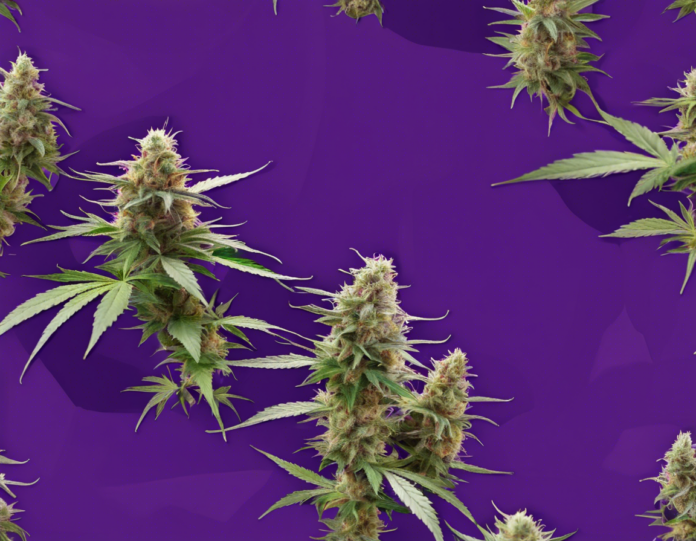Purple marijuana, also known as purple weed or purple cannabis, has been gaining popularity in the cannabis community for its distinctive color and potential unique properties. This type of cannabis plant produces buds with hues ranging from deep violet to lavender, creating a visually striking appearance that sets it apart from traditional green varieties. In addition to its aesthetics, purple marijuana is believed by some enthusiasts to offer a different set of effects and benefits compared to green strains. In this comprehensive guide, we will delve into the allure of purple marijuana, exploring its origins, characteristics, potential benefits, and the science behind its purple coloration.
Origins and Genetics of Purple Marijuana
Purple marijuana derives its distinct color from a group of compounds called anthocyanins, which are responsible for producing red, blue, and purple pigments in plants. These pigments are found in various fruits, vegetables, and flowers, including cannabis. The expression of anthocyanins in cannabis plants is influenced by factors such as temperature fluctuations, light exposure, and genetics.
Several cannabis strains are known for their tendency to produce purple buds, including Purple Kush, Granddaddy Purple, Purple Haze, and Purple Urkle. These strains typically have genetic backgrounds that predispose them to develop anthocyanins in their foliage and flowers, leading to the characteristic purple hues. Breeders have also developed hybrid strains specifically to enhance and stabilize the purple coloration, resulting in a growing variety of purple cannabis options in the market.
Characteristics of Purple Marijuana
In addition to its visually appealing appearance, purple marijuana is often associated with certain aroma and flavor profiles. While the scent and taste can vary depending on the specific strain, purple cannabis is known for its potential fruity, floral, and sweet notes, which can add another layer of enjoyment to the overall cannabis experience. Some users also report that purple strains have a smooth and mellow smoke, making them particularly pleasant for consumption.
From a potency standpoint, purple marijuana is similar to green strains in terms of its cannabinoid and terpene content. The effects of a purple strain will ultimately depend on its specific chemical profile, with some varieties being more indica-dominant and providing relaxing, sedative effects, while others may lean towards sativa traits, offering uplifting and energizing sensations. It is essential for consumers to consider the individual characteristics of each strain when selecting purple marijuana for their desired effects.
Potential Benefits of Purple Marijuana
While research on the specific benefits of purple marijuana is limited, some users believe that the presence of anthocyanins and other phytochemicals in purple cannabis may offer additional health perks. Anthocyanins are known for their antioxidant properties, which can help combat oxidative stress and inflammation in the body. By consuming purple marijuana, users may potentially access these antioxidant benefits in addition to the therapeutic effects of cannabinoids like THC and CBD.
Furthermore, some individuals find that purple strains are particularly effective for managing conditions such as pain, insomnia, stress, and anxiety. The combination of cannabinoids, terpenes, and anthocyanins present in purple marijuana may contribute to a more holistic and nuanced therapeutic experience for certain users. However, it is crucial to consult with a healthcare provider before using purple marijuana for medicinal purposes, especially if you have underlying health conditions or are taking medications.
The Science Behind Purple Coloration in Cannabis
The development of purple coloration in cannabis plants is a fascinating natural phenomenon that stems from complex biochemical processes. Anthocyanins, the pigments responsible for the purple hues, are synthesized through the phenylpropanoid pathway, a series of enzymatic reactions that convert phenylalanine and other precursors into various phenolic compounds. These compounds play essential roles in plant growth, reproduction, and defense mechanisms.
Under certain conditions, such as exposure to cooler temperatures during the flowering stage, cannabis plants may upregulate the expression of genes involved in anthocyanin production. This leads to the accumulation of anthocyanin pigments in the plant tissues, particularly in the buds and leaves, giving rise to the purple coloration. The exact mechanisms underlying this process can vary among different cannabis varieties, contributing to the diversity of purple phenotypes observed in the market.
How to Identify High-Quality Purple Marijuana
When choosing purple marijuana for consumption, it is essential to consider several factors to ensure that you are getting a high-quality product. Here are some tips for identifying premium purple cannabis:
-
Color Intensity: Look for buds with vibrant and consistent purple hues, indicating a strong expression of anthocyanins. Avoid cannabis that appears dull or discolored, as it may be a sign of improper cultivation or handling.
-
Aroma and Flavor: Opt for strains with complex and enticing aromas, such as fruity, floral, or spicy notes. A strong and pleasant scent often correlates with good quality cannabis.
-
Trichome Coverage: Check for abundant trichomes on the surface of the buds, which contain the cannabinoids and terpenes responsible for the effects and flavors of the strain. A frosty appearance is a positive indicator of potency.
-
Moisture Content: Ensure that the buds are properly dried and cured to preserve their potency and terpene profile. Overly dry or moist cannabis can indicate poor storage practices.
By paying attention to these characteristics, consumers can make informed choices when selecting purple marijuana and enhance their overall cannabis experience.
Frequently Asked Questions (FAQs)
1. Is purple marijuana more potent than green strains?
While purple marijuana can be potent, its coloration does not necessarily indicate higher potency. The effects of a cannabis strain are determined by its cannabinoid and terpene profile, not just its appearance. Some purple strains may be high in THC or CBD, while others may have milder effects.
2. Are there any risks associated with consuming purple marijuana?
Consuming purple marijuana is generally safe for most individuals, but it is essential to be aware of the potential risks associated with cannabis use, such as impaired cognitive function, dependence, and respiratory issues from smoking. It is advisable to consume cannabis responsibly and in moderation.
3. Can I grow purple marijuana at home?
Yes, it is possible to cultivate purple marijuana at home by selecting strains known for their purple phenotypes and providing the right growing conditions. Factors like temperature fluctuations, nutrient levels, and light exposure can influence the development of purple coloration in cannabis plants.
4. How can I preserve the purple color of marijuana buds?
To maintain the vibrant purple hues of marijuana buds, store them in a cool, dark place away from direct light and excessive heat. Proper curing and storage techniques can help preserve the color and potency of the cannabis for an extended period.
5. Are there any medicinal benefits specific to purple marijuana?
While purple marijuana shares many therapeutic properties with green strains, some users believe that the presence of anthocyanins in purple cannabis may offer additional antioxidant benefits. These antioxidants can help reduce inflammation and oxidative stress in the body, potentially enhancing the overall therapeutic value of the strain.
In conclusion, purple marijuana captivates cannabis enthusiasts with its unique color, aroma, and potential benefits. Whether you are drawn to its visual appeal or intrigued by its potential health perks, exploring different purple strains can add a touch of novelty to your cannabis consumption. Remember to prioritize quality and responsible use when selecting and enjoying purple marijuana to make the most of your experience.

